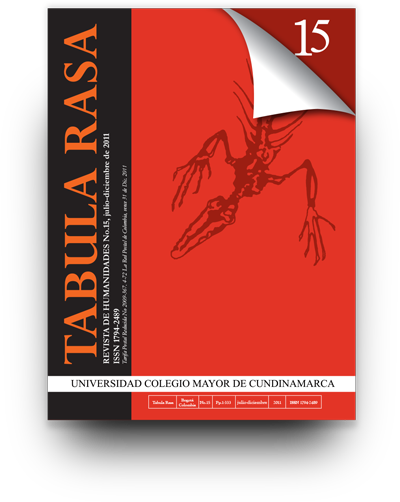¿How does mind and concept mapping strategy stimulate spatial intelligence development among university students?
¿Cómo la estrategia de mapas mentales y conceptuales estimula el desarrollo de la inteligencia espacial en estudiantes universitarios?
Show authors biography
This paper makes explicit the results of the research project entitled How does mind and concept mapping strategy stimulate visual-spatial intelligence development among university students?, which was developed in the framework of both Gardner’s Theory of Multiple Intelligences and the work by Novak and Buzán around concept and mind maps. Results of research evidence that using this strategy makes up a tool leveraging visualspatial intelligence, since it stimulates: the creation of images arranged so as to explain an idea; the development of visual memory to execute and recreate earlier perceptions; the improvement of artistic and aesthetic sense; a practice to control fine motor movement; a practice of visual art, since there is object, figure, color, proportion and perspective retention, among other central abilities characterising this intelligence.
Article visits 587 | PDF visits 189
Downloads
Armstrong, T. 2005. Las inteligencias múltiples en el aula. Buenos aires, Manantial.
Buzán, T. 2004. Cómo crear mapas mentales. Barcelona, Urano. de la Parra, E. y M. del C. Madero. 2002. La fascinante técnica de los esquemas mentales. México,
Panorama editorial.
Gardner, H. 1997. Estructuras de la mente. La teoría de las inteligencias múltiples. Bogotá, Fondo de Cultura Económica.
Gardner H. 1997. La educación de la mente y el conocimiento de las disciplinas. Barcelona. Paidós.
Gardner H. 2000. La educación de la mente y el conocimiento de las disciplinas. España, Paidós.
Gardner H. 2005. Inteligencias múltiples. La teoría en la práctica. Buenos Aires, Paidós.
Hernández, S. R. 2004. Metodología de la investigación. México, Mc Graw Hill.
Marchan, J. y otros. 2009. La evaluación de actitudes y valores. Santiago de Chila, Universidad Santiago de Chile.
Novak, J.D. y Gowin, D.B. 1988. Aprendiendo a Aprender. Barcelona, Martínez Roca.
Novak, J.D., Gowin, D.B. y Johansen, G. 1983. The Use of Concept Mapping and Knowledge Vee Mappin.
Ontoria A. y Otros. 2007. Potenciar la capacidad de aprender y pensar. ¿cómo? Madrid, Narcea.
Ontoria A. y Otros. 2008. Aprender con mapas mentales. Una estrategia para pensar y estudiar. Madrid, Narcea.
Ontoria, A. 2006. Mapas Conceptuales. Una técnica para aprender. Madrid, Narcea.
Ontoria, A. 2006. Aprender con mapas mentales. Madrid, Narcea
Terre C. O. 2001. ¿Inteligencia o inteligencias? Como potenciar la inteligencia del niño a través de las inteligencias múltiples. Lima, Libro Amigo.
Thorne, K. 2008. Motivación y creatividad en clase. Barcelona, Editorial Grao.
Zenhas A. 2002. Enseñar a estudiar, aprender a estudiar. Madrid, Narcea.




